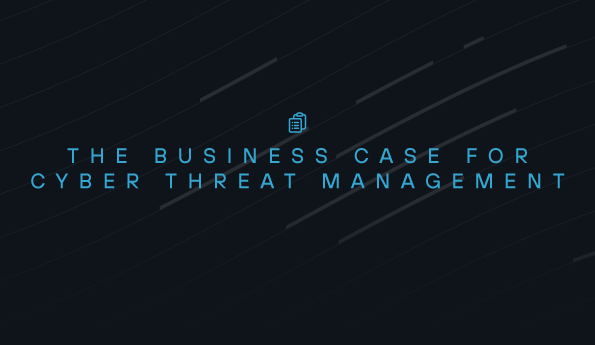5 elements of effective MDR: Beyond detection and response
Managed Detection and Response (MDR) services are sought out by businesses of all sizes who want to improve their security posture. But, with many potential MDR providers out there, choosing the right partner can feel overwhelming.
Effective MDR goes beyond simply detecting and responding to threats. It's about building a collaborative partnership that proactively strengthens your organization's security posture. Developing this partnership ensures that you have someone on your side when things go sour. So, with that in mind, let’s dive into the key characteristics behind effective MDR relationships.
5 elements of effective MDR providers
So, what sets effective MDR providers apart? Look for these five key elements:
1. Deep threat expertise and threat intelligence
An MDR provider acts on your behalf, monitoring your IT environment and acting when your systems are under attack. Due to this, your MDR provider needs a proven track record of success in identifying and mitigating real-world cyber threats. That also means they should deeply understand the ever-evolving threat landscape, staying current on emerging tactics and attacker behaviors. Building off that expertise and understanding of threats, your provider’s ability to translate raw threat data into actionable insights that inform security decisions is crucial.
2. Advanced security technologies and automation
Effective MDR providers leverage a powerful arsenal of security tools, including Security Information and Event Management (SIEM), Secure Access Service Edge (SASE), and Endpoint Detection and Response (EDR) solutions. Those that do provide a more holistic approach to outsourced security operations, delivering a Managed eXtended Detection and Response, or MXDR, experience.
Because of this, they have full observability over your IT environment. Adding 24/7/365 monitoring to that visibility is essential. Look for providers offering around-the-clock monitoring to catch threats as they unfold.
Beyond around-the-clock coverage, your MDR or MXDR provider must quickly detect and respond to threats. Automation is key for streamlining threat detection, investigation, and response, allowing security analysts to focus on complex incidents.
3. Human expertise: The irreplaceable analyst advantage
Although automation plays a crucial role, MDR is not a "set it and forget it" solution. Experienced security analysts are vital for interpreting data, investigating incidents, and orchestrating effective responses. MDR providers that prioritize AI-driven offerings provide a less tailored, expertise-driven experience.
A big differentiator that human-driven MDR provides is constant and effective communication. Your MDR team must communicate complex security issues clearly and understandably, fostering collaboration with your internal IT team. This enables you to know what’s going on in your environment and makes it easier to report findings to stakeholders, compliance auditors, and insurance adjusters.
4. Tailored Approach and Flexibility
Building off the last point, find an MDR provider that doesn’t take a one-size-fits-all approach. Every organization has a unique appetite for risk and multiple different solutions at play. Effective MDR providers offer customizable solutions catering to your industry and environment.
This should also include having a dedicated representative on your MDR team that you can forge an ongoing relationship with. That way, you have consistent interactions with a person who knows and understands your environment rather than a one-off conversation with whatever analyst happens to be assigned to your case at the time.
Look for a provider that can also scale its services to accommodate your organization's future growth, ensuring continuous protection as your needs evolve. This includes being able to efficiently pull reports and customize detections to meet the needs of your growing business.
5. Transparency and Collaboration: Building Trust is Key
Lastly, seek out MDR options that prioritize transparency in all things. Your MDR provider should share the same view over your environment that you do. That way, you have complete purview, instead of receiving tailored “insights” from solutions hidden behind a black box. Human-centric MDR solutions do a great job of this by keeping you in touch with a real person as opposed to simply serving up whatever insights an AI system presents.
Transparency in communication is vital as well. Your MDR provider must inform you in real-time about identified threats, ongoing monitoring efforts, and the actions taken to mitigate risks. MDR solutions that don’t obscure findings in a “black box,” presenting you with the same view they use to investigate makes it easy to stay on the same page. Additionally, you need to be able to communicate with them over the channel of your choice 24x7, whether that’s over email, Slack, or Teams.
Key takeaways
When it comes to finding the ideal MDR solution, building trust is essential. The best MDR providers act as a true partner and extension of your security team, working collaboratively to safeguard your organization from cyberattacks.
Your MDR choice is ultimately an investment in your organization's security future. By prioritizing these five key elements, you ensure you find a partner that goes beyond basic detection and response, providing a comprehensive security shield and the peace of mind that comes with knowing your data and systems are well-protected.
Learn more about choosing the best MDR provider for you by reading our eBook.
See Todyl in Action
Learn how you can protect what you built.
Stay on the Cutting Edge of Security
Subscribe to our newsletter to get our latest insights.



